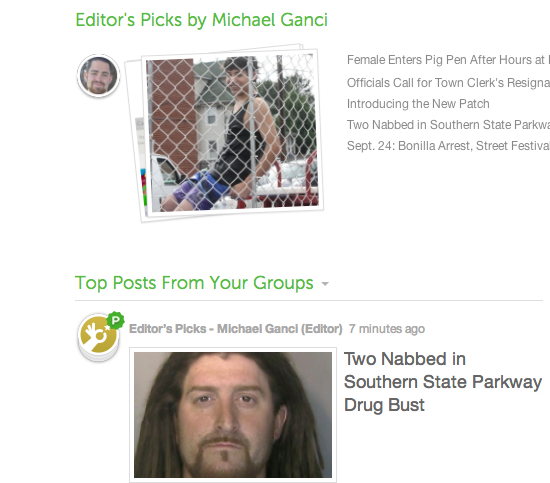Patch’s redesign went live Sunday night in five Long Island towns, about three months after CJR posted a story on the hyperlocal company’s alleged plans to move away from content creation and toward more community engagement.
My first takeaway from perusing the redesign was that, apparently, Patch doesn’t think its users can read. Verticals are denoted by round icons, most of which are so small that the section names underneath the images are cut off.

And the icons are not clear enough to stand minus the labels—”editor’s picks” is a hand that appears to be flicking a piece of lint.
Editor’s picks, which is not the same thing as saying “news,” anchor the top of the page on a photo carousel that rotates too fast to read about each offering, further suggesting that basic literacy is passe in the world according to the AOL-owned network of sites. Right below the editor’s picks are “top posts from your groups,” which resembles Facebook’s newsfeed in that users select which topics and groups to follow.

PaidContent’s Laura Hazard Owen writes:
The redesign is focused around groups — both editor-curated groups like “Police and Fire” and “Getting Around” and member-created groups for, say, class parents, religious institutions or kids’ soccer teams. All of the businesses listed in Patch’s directory will turn into groups as well, where business owners can post content and customers can post reviews.
Patch editors are still writing editorial content, which is featured at the top of each page, but they’re taking a less central role.
Facebook, of course, already offers a successful platform for groups and companies to reach their target eyeballs, which appear in a user’s newsfeed along with non-local topics, creating a mishmash that’s informative and not bound by town lines. I doubt thriving Facebook groups will feel a need to migrate to a more insular environment. And the one reason I can see to make a point of visiting a site—the value added by its local editor’s original reporting—goes away as the role of newsgathering recedes. And with a less central role, there will probably be a need for fewer local editors; it’s not difficult to switch links out of that top spot. The post purportedly written by Bellmore Patch Local Editor Michael Ganci explaining the redesign is bylined “Your Editor,” whose hyperlink is connected to the user profile of “Chris Patcher,” Patch’s weird digital alter-ego (when I worked at Patch in 2009 and 2010, all the local editors had to be Facebook friends with Chris Patcher).
Fewer staff along with the advertising that will undoubtedly start to infiltrate user feeds in some form (Facebook and Twitter both do it) means potential for a larger profit margin for the struggling company, whose revenues are still nowhere near matching the money AOL has pumped into it. It does have extensive listings for all the businesses in every community it enters, but the company has yet to monetize that wealth of information in any scaled way; at this point, I can’t picture the directory usurping Yelp or FourSquare. Patch isn’t offering anything, besides local news, that isn’t widely available elsewhere. Anonymous insiders have long claimed that this newsgathering is not the priority in the company and now, though Patch continues to say journalism is important, its long-planned redesign, where it’s hard to identify news items, says otherwise.
Kira Goldenberg was an associate editor at CJR from 2012-2015. Follow her on Twitter at @kiragoldenberg.
